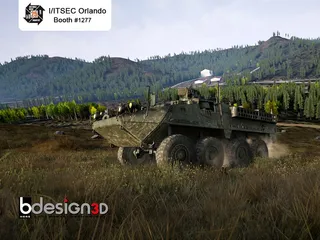Deck Landing Trials on the QEC
Contact Our Team
For more information about how Halldale can add value to your marketing and promotional campaigns or to discuss event exhibitor and sponsorship opportunities, contact our team to find out more
The Americas -
holly.foster@halldale.com
Rest of World -
jeremy@halldale.com

Flight trials off the US East Coast validated the F35/QEC Integration Simulator at BAE Systems Warton. Dim Jones' observations on some of the trials.
During the last part of 2018, the first of the UK’s new Queen Elizabeth Class (QEC) aircraft carriers deployed to the US Navy Flight Test Center at NAS Patuxent River to conduct ‘First-of-Class’ flight trials with F35B Lightning II aircraft, flown by Royal Navy, Royal Air Force, US Marine Corps and BAE Systems test pilots. I witnessed the simulated recovery and vertical landing of a flight of four F35Bs.
The F35/QEC Integration Simulator comprises a cockpit with full visual and a reconstruction of Flying Control, or FlyCo, situated in the rear island of the QEC carriers, in which during deck landing operations are: Commander Air (Wings), Landing Signals Officer (LSO), Tower Controller, Lieutenant Commander Flying (“F”), Deck Operations Officer (DOO), and the FLYCO Assistant (“Logger”). The cockpit simulator can be used as a standalone device or can be linked to FlyCo personnel interacting with the aircraft represented by the cockpit. Alternatively, the aircraft in the simulation can be computer-generated, or recordings of any profile from previous missions.
Pre-Trials Practice
Prior to the flight trials, all participating pilots had undergone extensive practice in the F35/QEC Integration Simulator; additionally, FlyCo personnel and selected Bridge Team players such as the Officers of the Watch (OOW) had visited the Warton simulator, plus experienced operations from both the aircraft and the deck. These trials were, in fact, the fourth set of F35B sea trials, the previous three having been conducted by the USMC on USS Wasp and USS America. Therefore, the characteristics of the F35B at sea were known, although unique features of the QEC ships, such as the ski ramp, were not. In addition to F35B, many other types visited the ship during the trial period, including the MV22 Osprey and CH53 helicopters.
There were no simulators on the ship during the trials, although the normal procedure will be to install up to three Deployable Mission Rehearsal Trainers (DMRT) from the main operating base at RAF Marham whenever F35s are embarked, leaving the static full-mission simulator at Marham for operational conversion unit and squadron training use.
The simulator was used to develop the processes by which the trials would be conducted. The first two of three Development Testing programmes (DT1 and DT2) were completed between September and November 2018; the content of DT3 is under discussion. The first operational squadron (No. 617) declared Initial Operating Capability (IOC), for land operations only, in December 2018. The focus for 2019 will be operational testing, which will be conducted by the Operational Test & Evaluation (OT&E) Squadron – No 17, based at Edwards AFB – and 617 Squadron, with a view to IOC Maritime at the end of 2020.
Managing Unique Winds
Most of the limitations identified at sea were not aircraft limits, but rather deck operations constraints. For example, when the natural wind speed is high, QEC carriers are quite capable of generating 50 knots of Wind Over The Deck. In addition, the twin islands can produce locally higher wind speeds and turbulence. This had been modelled in real time by Warton engineers, in conjunction with the University of Liverpool, using computational fluid dynamics, specifically Delayed Detached Eddy Simulation (DDES), and subsequently validated using a 1/200 scale model of the ship in a water tunnel.
I was again able to fly the integration simulator, and was again impressed at how the interaction between aircraft and ship and the automatic engine, nozzle and flight control functions of the aircraft make what could be a very demanding task extremely easy – as long as everything is working! The simulator has the ability to model extreme conditions and degraded and equipment failure modes.
There is little doubt that this simulator will continue to play a pivotal role in the further trials work, and in preparation of both pilots and ship’s crew for QEC/F35B deck operations.
Originally published in Issue 2, 2019 of MS&T Magazine.


